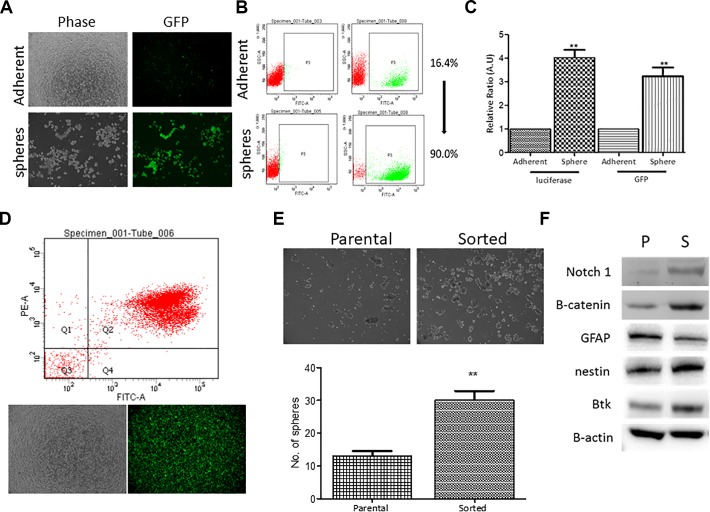Figure 2.
Characterization of CD133-LG expressing DBTRG-05MG cells. A, Lentiviral-infected DBTRG cells. Immunofluorescent microscopic images showed that increased GFP signal in the neurospheres generated from DBTRG-05MG-CD133-LG as compared to their adherent parental counterparts. B, Flow cytometric analysis. Neurospheres generated from DBTRG-05-CD133-LG cells were approximately 90% positive CD133 and GFP while only 16.4% in the adherent counterparts. C, Dual reporter assay. As indicated, neurospheres showed significantly increased level of luciferase activity and GFP fluorescence than their adherent counterparts. D, Application for fluorescence-activated cell sorting (FACS). DBTRG-05MG-CD133-LG cells were subjected to FACS. The sorted cells were both CD133 and GFP positive (estimated 95.4%). E, Comparative neurosphere-forming ability assay. Sorted DBTRG-05MG-CD133-LG cells showed a significantly higher ability to generate neurospheres as compared to their parental counterparts. F, Comparative Western blot analysis of parental and sorted DBTRG-05MG-CD133-LG cells. Stemness markers, notch1, β-catenin, nestin, and Bruton’s tyrosine kinase (Btk) were markedly increased while differentiation marker glial fibrillary acidic protein (GFAP) was decreased in the sorted cells when compared with their parental counterparts. **P ≤ .01.

